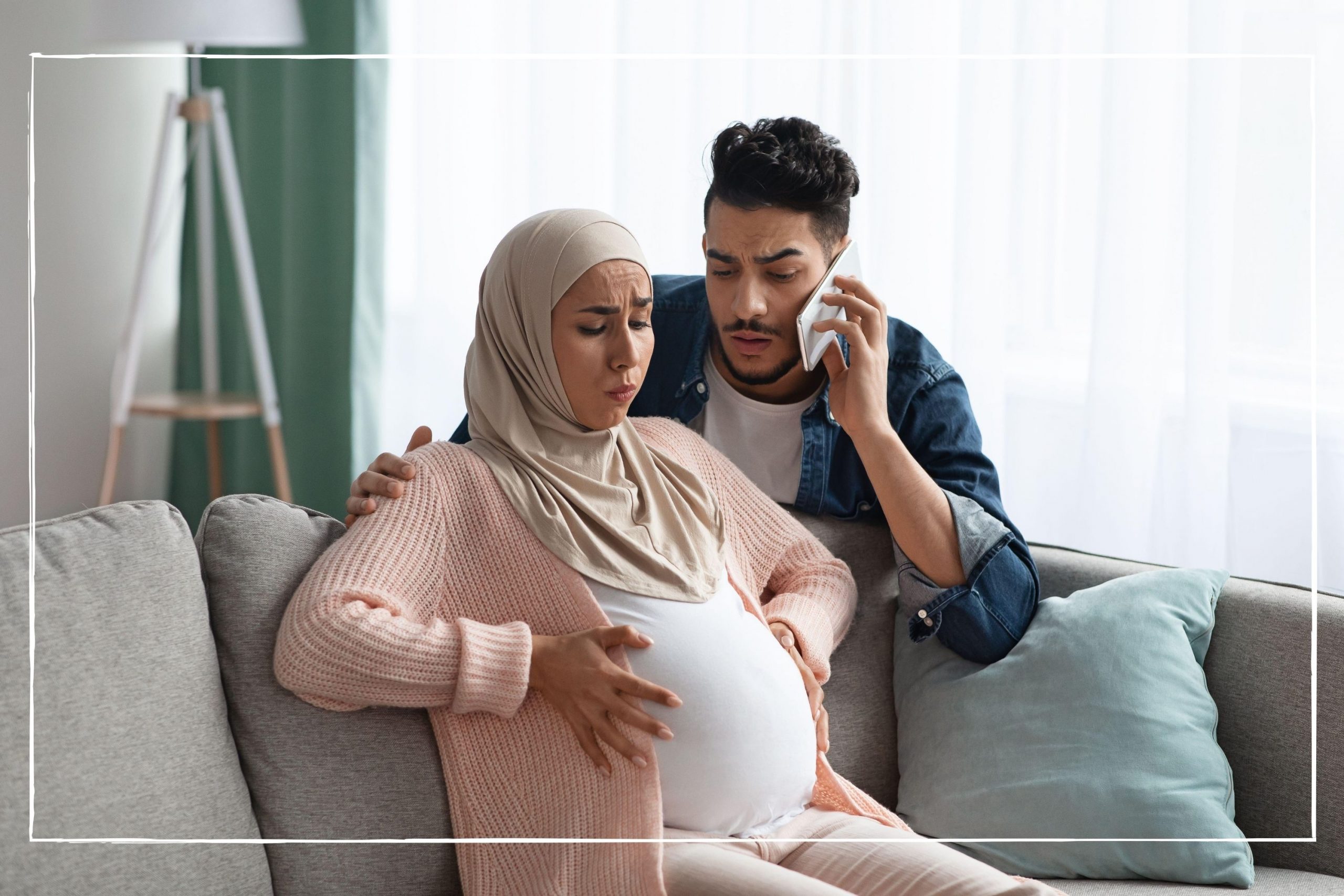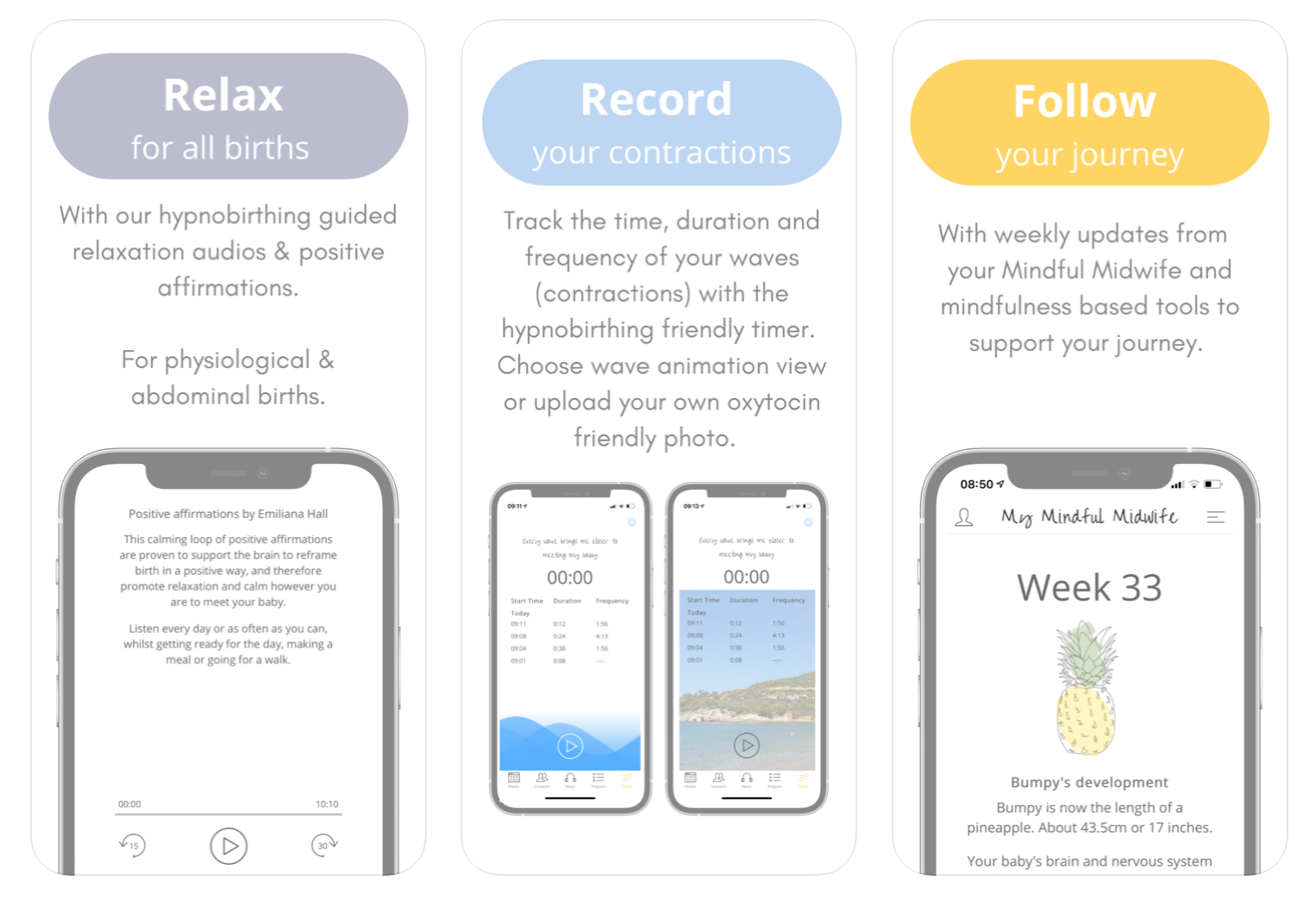What do contractions feel like? How to know you're in labour


While every woman will labour differently, every mum-to-be wants to know: what do contractions feel like? How can I tell whether I'm in labour?
The very first contractions you feel may be 'false labour pains', often called Braxton Hicks. Whilst they might feel worrying, Braxton Hicks contractions do not follow a pattern and will usually not increase in frequency. They aren't a sign that the baby is coming and will usually go away if you change position.
Real contractions vary in intensity as labour progresses and some women say early contractions feel like period pain. When labour is in full swing, contractions feel like powerful surges that are intense and rhythmic. These contractions get closer together and more powerful as they dilate your cervix and push the baby down. Some women in labour will feel different types of contractions but all real labour pains have a pattern. They will come closer together and last longer as you start the process of meeting your baby. Whilst many women will feel excited, others can feel anxious about labour. To understand more about what different contractions feel like, we interviewed Registered Midwife, Anneke Holloway.
What do contractions feel like?
- Mild period pain that increases
- Rectal pressure, like you need to have a bowel movement
- Powerful, intense surges or waves that make your stomach rock hard
- Intense pelvic pain
- Pressure that starts in the back
Contractions can feel different for all labouring women. Many describe contractions as feeling like they needed to have a bowel movement, with pressure in the rectum. Contractions that push the baby down, once you are fully dilated, are very intense. You won’t be able to talk until they’ve passed the peak. Some women say these contractions feel like waves or surges.
Whatever they feel like, contractions will make your stomach very hard and they usually start from the top of the uterus. In late pregnancy, the uterus starts underneath your breast bone (ribs) and the contractions will then ripple down your stomach, pushing the baby down.
Midwife Anneke Holloway says there is a real range of different sensations. “It’s not unusual for contractions to feel like period pains in the early stages. Contractions can feel like a dull ache in your pelvis, rectum or back. Rectal pressure is commonplace for contractions to feel like they’re starting. Braxton Hicks contractions feel like tightenings that don’t last very long, with no pattern.”
You might feel worried about how you will cope with the pain, but don't worry, because there is a range of options available for pain relief in labour. Your midwifery team will help you work with the contractions and every contraction brings you closer to meeting your new baby.
Parenting advice, hot topics, best buys and family finance tips delivered straight to your inbox.
First-time mum Sarah, 25, was surprised by her labour: “my contractions woke me in the night. We had talked about contractions in antenatal class. That’s why I thought I would instantly recognise what contractions feel like when they started. Because I was half asleep, at first I thought it felt like a period starting. Then my waters broke, all over the bed. Not long afterwards, the contractions were too intense to cope at home, so I headed to hospital.”
What causes contractions in pregnancy and labour?
There are different types of contractions and different triggers for them. Contractions can be triggered by orgasms, overexertion and being dehydrated. Braxton Hicks contractions feel like uncomfortable pains that are irregular. Research shows, that they are usually unpredictable and rarely follow a pattern.
Doctors don’t know exactly what causes Braxton Hicks, as there is currently no definitive evidence on their causes. However, they are a normal part of pregnancy. They are more likely to happen when you’re dehydrated, need to urinate or when you’ve done lots of activity. So if you're starting to worry you're having Braxton Hicks contractions, sit back, relax and have a drink.
How does labour start?
The exact biological mechanism that triggers labour contractions is still currently unknown. However, in most pregnancies, the baby’s gestational age is a major factor in starting labour. Labour is also triggered by the ageing of the placenta. Recent studies suggest labour might be related to the maturation of a baby’s lungs.
Contractions begin after a complex set of steps that initiate labour. The exact trigger for spontaneous labour (that begins without any prompt) can vary.
One study of nearly 700 women found most were unaware of what started their contractions. But, for those who did know the trigger, it was found 32% stated physical activity (usually walking) as the cause.
A total of 24% were medically triggered, 14% had some other physical trigger (including sex), 12% ingested something, 12% experienced an emotional trigger and 7% had a maternal illness.
When labour starts, according to research, the brain prompts the release of a hormone named oxytocin. Oxytocin, often called the “love hormone”, prompts the contraction of the myometrium. The myometrium is the smooth muscle tissue of the uterus.
How do contractions help you give birth?
A contraction is defined as the tightening and loosening of a muscle. When you flex any of your muscles, you’re contracting them. As the strongest muscle in the human body, the uterus has a lot of work to do.
Contractions open and thin (efface) the cervix by putting pressure on it. Once the cervix is fully dilated, contractions push the baby out. Some women say their contractions feel like waves or describe them as surges. This is because they gradually rise in intensity, peak and then fade away. The pain usually stops in between each contraction. The strength of contractions increases throughout labour to thin and dilate the cervix.
One study found that some of the strongest contractions occur when you’re about 6cm dilated. However, the strength of contractions throughout labour will differ in each woman.
How do you know you’re having real contractions?
Some women feel contractions as early as their second trimester. These are often known as “practice contractions”, or Braxton Hicks. The key difference between real contractions that start labour and these practice ones is timing, pattern and intensity.
| False labour (Braxton Hicks) | Real labour contractions (baby is coming!) |
| Irregular, with no pattern | Last 30-70 seconds and come in regular intervals |
| Usually stop when you change position, walk or rest | Don’t stop with a change in activity, but get more intense over time |
| Become weaker over time and fade away | Become more intense, to the point you cannot talk through them |
| Are uncomfortable, but manageable | Can be very intense and might need pain relief |
Real labour contractions will feel like a regular pattern of pressure that increases to a peak and then fades away. Your abdomen - all the way from your ribs to your pelvis - will harden. Contractions will feel like they’re increasing in intensity as you progress towards baby's birth. When you’re in labour, the contractions will also feel like they are getting closer together, in a pattern. Changing position, taking pain relief or having a drink won’t stop genuine labour contractions.
Midwife Anneke Holloway says “the key distinguishing, differentiating factor is your movement. If you change position during a contraction, if it is a Braxton Hicks contraction, it will stop. Braxton Hicks are involuntary muscle tensions and have no pattern. Contractions that increase in intensity and become more frequent, whatever you do are the real thing. In active labour, contractions feel like they’re so intense, you can’t talk through them”. If you're ever worried about anything, don't hesitate to contact a healthcare professional for advice.
How to ease contractions: your pain relief options
Many women use heat, massage and hypnobirthing techniques to help them cope when labour contractions feel at their most intense. Others prefer to use pain killers like paracetamol, epidurals and gas and air. There are a range of options to help you manage pain relief in labour. Once you're in hospital, you will have access to many different medications, but managing pain at home is the first step of labour.
The very earliest contractions feel like period pain, so a warm bath or hot water bottle can be very soothing for easing discomfort.
When you call your maternity unit for advice, your midwife might suggest that you take paracetamol and wait a little longer until contractions are closer together. Sometimes they might also suggest the use of TENS machines (Boots | £39.99). TENS machines are small, portable machines that use mild electrical signals to help with pain relief. Safe in pregnancy and labour, these machines have pads that you stick where you're most uncomfortable and you can easily control the frequency and strength of the current.
Hypnobirthing to cope with contractions
Midwives will often teach you how to use breathing techniques to control your reactions to contraction surges. Some women find hypnobirthing techniques help them control what contractions feel like.
Midwife Anneke Holloway agrees hypnobirthing is a great way to help you control your reaction to what contractions feel like: “practising hypnobirthing will help you enter a quiet, meditative state. You can breathe through the contraction and visualise getting closer to meeting your new baby. Hypnobirthing helps you see that contractions feel like a surge or wave that you can ride.”
Mum of two, Jodie, said “I didn’t realise I was in labour to start with. I was a little bit overdue and I felt some back pain. My boyfriend suggested a bath would sort me out. As soon as I got in, I felt so much better. He brought me a nice cup of tea and we had a lovely chat. Feeling warm and loved meant I was relaxed and I soon realised that the contractions felt like when I first gave birth. They were getting stronger and coming more rapidly. Our little girl was coming!"
When contractions feel like they're too much to handle
Your pain relief options will depend on where you are birthing your baby. In hospital you will have access to the full range of pain relief, including an epidural. An epidural will usually stop you feeling contractions, or reduce their intensity. Other pain relief options include pethidine, a strong painkiller. If you are worried your contractions feel like they’re too painful, ask your midwife for advice. Your midwifery team can advise you on pain relief in labour when you write your birth plan. Of course, you can always change your mind on what you need during labour.
Does the baby move during contractions?
Many mothers are surprised to learn that yes, babies often can move and kick during contractions. But you might not always feel them kicking because contractions do limit their movement. Contractions squeeze your uterus and, of course, your baby too, pushing them towards the exit. Some studies have found that a baby’s movement is greater during contractions than in between them. Baby movements during contractions can make them feel like they last longer, too.
Your midwife will usually monitor your baby’s reactions to contractions using a doppler. This machine tells the midwifery team whether the baby’s heart rate is getting faster or slower. Some women will have "continuous fetal monitoring" whereas in other labours, this will be intermittent (every so often).
Doctors will listen carefully for any heart rate patterns that indicate the baby is getting distressed.
Midwife Anneke told GoodToKnow, “the amount of space in your uterus is reduced during a contraction. That means babies don’t have as much room to move. You’re unlikely to be aware of baby’s movements, as contractions feel very intense. Your midwife will ask you if the baby is moving in between contractions. That is one of the ways to be sure baby is coping well with labour”.
https://www.youtube.com/watch?v=wEyHd_Dc8t8
Timing contractions before going into labour
The timing of your contractions is a reliable indicator of how far along in your labour you are. Midwives will monitor your contractions carefully for their intensity, duration and frequency. Early labour pains might not form a pattern and these contractions feel like period pains.
In early labour, you may not see much progression. The early stages of labour can be very long. Midwife Anneke advises that you focus on breathing through contractions and feel for how they are changing. She says “If you can still talk through your contractions, it’s usually a sign that there is still quite some way to go.”
As your contractions feel like they are getting stronger, and more frequent, they are dilating your cervix. When you are fully dilated, contractions start to push your baby down. Whilst the length of all labours will vary, when contractions are close together and very intense, you are getting closer to birth.
Many women find that timing their contractions with a stopwatch can be difficult when they’re experiencing pain and heightened emotions. There are a range of apps that can help. Midwife Anneke Holloway co-founded the My Mindful Midwife app (download for Apple | Android) as a way to help women monitor their contractions. “It’s so important that you can stay relaxed during contractions and trust your instincts about when it’s time to visit the hospital”, she says.

When should you seek medical advice?
It's important to seek help as soon as you are worried at any point during your pregnancy or labour. You should call immediately if you experience smelly or discoloured waters, bleeding or pain that you cannot manage at home. If you notice your baby is moving less than normal at any time in your pregnancy or labour, always call the Maternity Assessment Unit immediately.
When to call for advice during labour contractions:
- when your waters break
- if your baby is not moving as often as usual
- your waters are smelly or discoloured
- there is vaginal bleeding
- pain is unmanageable
- the pain is constant/ it doesn't stop between contractions
- you can feel pain in your scar if you have had a previous caesarean
- if you are having intense contractions before 37 weeks (premature labour)
Midwife Anneke Holloway notes there are a few key things to be aware of during contractions: “If you experience pain in between contractions, this could be very concerning. Contractions feel like they have a start and an end. When there is no period of relief in between contractions, this is something to look out for. Mums who have had a previous caesarean who experience scar pain must call for advice straight away. Always get advice if you’re concerned about anything at all. You know your body and if something feels wrong, trust your instincts.”
If you are having painful, regular contractions before you have reached term (37 weeks), get in contact with your emergency midwife helpline. They will need to assess you for preterm labour.
If you are at term, congratulations, you will soon meet your baby! You might be unsure whether your contractions feel like the start of labour. Perhaps you are experiencing other early signs of labour.
Related video: How to bring on labour

Tannice Hemming has worked alongside her local NHS in Kent and Medway since she became a parent and is now a mum of three. As a Maternity Voices Partnership Chair, she bridged the gap between service users (birthing women and people, plus their families) and clinicians, to co-produce improvements in Maternity care. She has also worked as a breastfeeding peer supporter. After founding the Keep Kent Breastfeeding campaign, she regularly appears on KMTV, giving her views and advice on subjects as varied as vaccinations, infant feeding and current affairs affecting families. Two of her proudest achievements include Co-authoring Health Education England’s E-learning on Trauma Informed Care and the Kent and Medway Bump, Birth and Beyond maternity website.